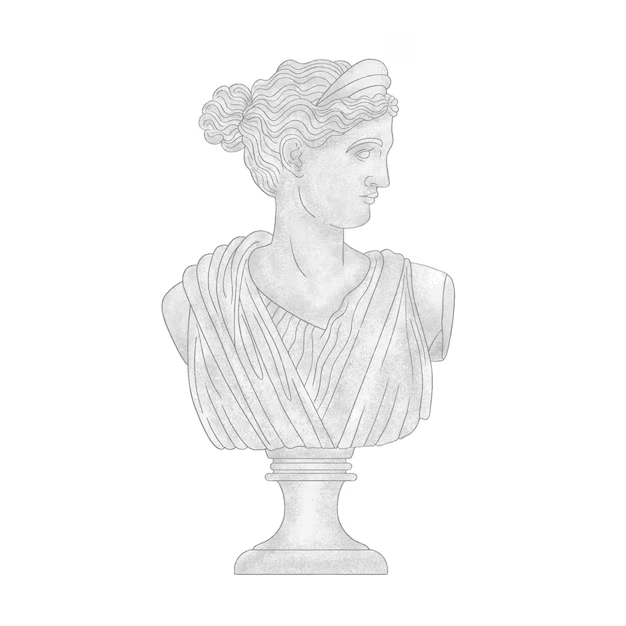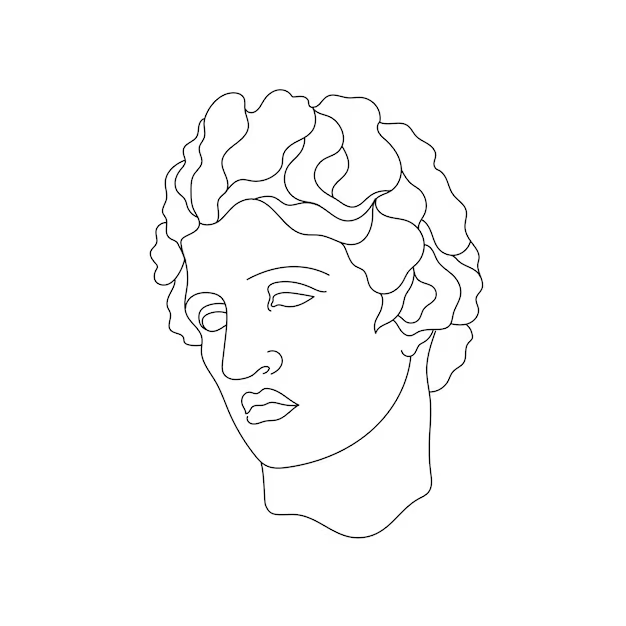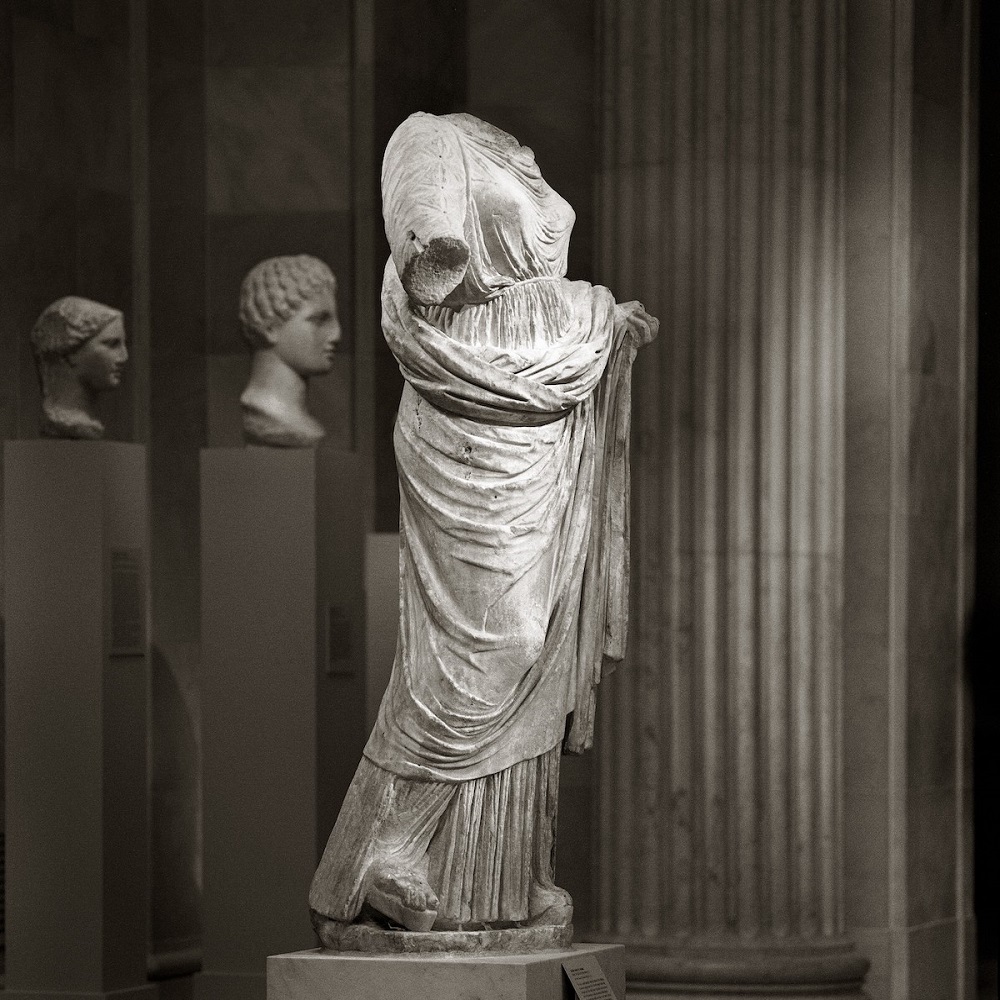The Historical Significance of Sculpture Drawing
The art of sculpture drawing has been pivotal in the evolution of artistic practices. Dating back to the Renaissance, this form of drawing played a crucial role in preserving and studying ancient sculptural works. Artists would sketch statues to understand form, pose, and emotion, translating three-dimensional marvels onto two-dimensional surfaces. This bridged the gap between ancient arts and modern expressions.
The Renaissance and Rediscovery of Classical Statues
During the Renaissance, classical statues were unearthed in cities like Rome, bringing forth a renewed admiration for antiquity. These discoveries ignited inspirations among artists like Michelangelo and Raphael. They flocked to Rome to sketch these sculptures, driven by a fascination with their beauty and complexity. Drawing served not just to emulate, but to deeply engage with the nuances of classical artistry.
Influence of Antique Texts on Sculpture Drawing
The rediscovery of texts by classical authors such as Vitruvius also deeply influenced Renaissance artists. These texts, filled with discussions on proportions and aesthetics, provided a theoretical foundation that artists translated into their sketches. Sculpture drawing thus became a disciplined practice guided not only by visual admiration but also intellectual understanding. Artists integrated classical ideals with personal styles, thanks to insights from both sculptures and texts.

The Artistic Practice of Sculpting on Paper
Drawing is not just a form of art, but a tool for sculptors to shape ideas on paper. In the past, artists used drawing as a way to study and capture the essence of three-dimensional sculptures. These drawings allowed sculptors to explore form, structure, and detail in a two-dimensional medium. Such practices honed their skills and expanded their artistic vision.
Hubert Robert and the Capitoline Gallery Drawings
Hubert Robert, known for his detailed red chalk drawings, was a master in sculpture drawing. His works in the Capitoline Gallery are prime examples of his keen eye for detail. He sketched ancient statues, breathing life into paper with precise lines. His drawings reflect a deep study of form and a fluid translation of sculpture into art.
Taddeo Drawing the Laoco?n: An Iconic Artistic Endeavor
Taddeo’s drawing of the Laoco?n stands as a monumental moment in art history. This dramatic scene of human struggle against divine punishment captured artists’ imagination for centuries. Taddeo’s work showcases how sculpture drawing can convey the intensity and drama of a moment. It underlines the power of a pencil to sculpt emotion and narrative on paper.
Drawing Techniques Inspired by Classical Sculptures
Drawing techniques have evolved significantly, often drawing inspiration from classical sculptures. These timeless works provide invaluable lessons in proportion, composition, and the use of light and shadow, shaping the practices of countless artists across generations.
Learning from the Laoco?n: Understanding Proportion and Composition
The Laoco?n group sculpture, a celebrated masterpiece from antiquity, offers profound lessons in proportion and composition for artists. Discovered in 1506, its dynamic arrangement of figures—Laoco?n and his sons ensnared by serpents—offers a complex study of intertwined forms and expressive anatomy. Artists learn to appreciate the mathematical precision on which such sculptures are based, bringing a similar rigor to their own sculpture drawings. This precision in drawing ensures that every line contributes to a harmonious whole, mimicking the balance found in nature and classical art.
Importance of Drawing for Sculptors and Painters
Drawing remains crucial not only for sculptors but also for painters. By sketching sculptures, artists grasp the subtleties of three-dimensional forms on a two-dimensional surface. This practice builds a bridge between observational skills and an intuitive understanding of volume, essential for both painting and sculpting. Art academies across Europe emphasize rigorous drawing exercises, recognizing that mastery over drawing paves the way for mastery in sculpture and painting.
Tintoretto’s Use of Light and Shadow in Sculpture Drawing
Jacopo Tintoretto, a Venetian painter, exemplified the effective use of light and shadow in his drawings. He never sculpted, but his extensive collection of sculpture casts allowed him to explore this interplay extensively. Tintoretto would often draw at night by candlelight, manipulating shadows to add depth and intensity to his sketches. This technique highlighted the dramatic contrasts and helped him understand how light accentuates the contours of sculpture, an approach that brought a sculptural feel to his two-dimensional works.

Drawing as Sculpture: Techniques and Exercises
The crossroads of drawing and sculpture reveal a rich tapestry of artistic practices. Sculpture drawing is not just mimicry; it is a profound study allowing artists to craft in two dimensions what is typically perceived in three. This section delves into specific techniques and exercises that artists employ to depict statues and the human body in three-dimensional forms.
Drawing the Human Body in Three Dimensions
Creating the illusion of depth on a flat surface begins with understanding the human body as a series of interconnected volumes. Drawing exercises often involve breaking down the body into geometric shapes like cylinders, spheres, and blocks. This helps to grasp how light, shadow, and perspective work to make a flat image appear three-dimensional.
- Start with simple shapes to form the building blocks of the body.
- Consider light source direction to create contrasting shades and depth.
- Use distinct line weights to suggest closeness or distance from the viewer.
- Visualize and sketch the body’s underlying structure before detailing.
- Practice drawing from different angles to comprehend the full form.
By mastering these steps, artists can effectively simulate the intricate play of muscles and bones that characterizes a statue.
Using Proportion and Volume to Depict Statuary
The key to authentic statue drawing lies in correct proportion and volume. Like the Renaissance masters before them, contemporary artists use classical canons of proportion to gauge the relationship between different parts of a statue.
- Measure key parts of the sculpture using a consistent unit, often the head.
- Observe and record how different parts relate in size and shape.
- Apply an understanding of human anatomy to ensure accurate depiction.
- Utilize shading to illustrate volume and create the effect of three-dimensionality.
With these techniques, sculpture drawing transcends mere representation; it becomes an exploration of form, an exercise in seeing, and a pathway to deeper appreciation of sculptural art. Such exercises not only enhance drawing skills but also fortify the artist’s ability to perceive and render the tangible weight and volume of statues in their work.

Contemporary Approaches to Sculpture Drawing
Modern times have seen new methods in sculpture drawing. Artists use innovative tools and techniques to enhance their works. With these advances, capturing the depth and detail of statues has become more intricate.
3D Visualization in Modern Sculpture Drawing
Artists now often turn to 3D visualization techniques. They create detailed models on computers, using software designed for this very purpose. These virtual models allow for a full exploration of form and structure from every possible angle. This digital approach to sculpture drawing helps artists to study and replicate the volume of statues with a new level of accuracy.
- Digital tools bring a fresh perspective to traditional drawing techniques.
- Software enables a deeper understanding of spatial relationships.
- Artists can manipulate light and shadow in a controlled virtual environment.
Innovations and Challenges in Replicating Classical Statues
Despite these innovations, replicating classical statues remains a challenge. Each statue has unique details that are tough to capture. The subtlety of muscle tension or the flow of drapery requires careful observation. Artists work to maintain the essence of the original while using modern techniques to add depth to their replicas.
- New methods must honor the original’s texture and emotion.
- Artists face the task of blending the old with the new.
- The goal is to achieve a balance between innovation and tradition.
Through these contemporary approaches, the art of sculpture drawing continues to evolve. It adapts to modern times while still holding onto its historic roots.
The Role of Drawing in Sculpture Appreciation and Education
Drawing plays a key role in understanding and appreciating sculpture. Artists and enthusiasts use sketching to explore and dissect the intricacies of sculptural works. This tactile approach to artwork allows for a deeper engagement beyond mere visual appreciation. Through drawing, one can unravel the layers of technique, form, and historical context encapsulated in sculptures.
The Importance of Sketching for Understanding Sculptural Form
Sketching is vital for comprehending the form of sculptures. Here’s how drawing facilitates this understanding:
- It breaks down complex forms into simpler shapes.
- It aids in grasping the underlying anatomy of the sculpture.
- It captures the play of light and shadow on the form.
- It allows for the study of a sculpture from multiple viewpoints.
- It fosters an intimate familiarity with the artist’s techniques and choices.
By sketching, one can quite literally ‘feel’ the form, gaining insight into the sculptor’s process and intent.
Incorporating Drawing Practices in Art Academies and Workshops
Art academies and workshops emphasize drawing to hone an artist’s skills. Effective programs follow certain strategies:
- They provide systematic exercises in proportion and volume.
- They encourage drawing from live models and statues.
- They teach the analysis of classical works for studying proportions.
- They cultivate a critical eye for detail through repeated practice.
- They introduce modern techniques alongside traditional methods.
Art students and professionals alike find that regular drawing practice sharpens their ability to visualize in three dimensions and enhances their overall artistic capabilities.